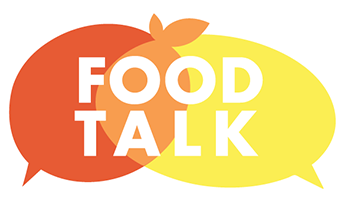While Wakanda may not be a real place, it is supposed to be located in East Africa. The exact location has varied throughout Marvel Comics, but one area that was suggested was the north end of Lake Turkana, making Wakanda somewhere between South Sudan, Uganda, Kenya, Somalia, and Ethiopia.
These countries are very diverse in people, languages, and importantly—food!
1. Vegetables from Kenya
2. Grains from Ethiopia
3. Fruit from Uganda
The Black Panther comic book writer recently discussed what Wakandans would have eaten. [1] She mentioned that Wakanda pulls from the cultures of the African nations that surround it for things like jewelry and music so they would do the same thing for their food. Wakanda would probably be influenced by the traditional meals of countries it shares its borders with.
What would those meals look like? Meals from these areas tend to be full of fruits and vegetables. Let’s explore some of the traditional foods from countries like Kenya, Ethiopia, and Uganda so you can eat like a Wakandan at home.
Vegetables From Kenya
Kenya has a variety of landscapes and climates, which allows many different types of plants to grow. [2] The predominant crop is Kenya is maize or corn, but people eat many kinds of fruits and vegetables. [3] Leafy vegetables like collards and kale grow wild and are regularly eaten. [2] Kenya’s dietary guidelines suggested that people eat “plenty of green leafy vegetables, red and yellow vegetables, and fruits every day; and include a variety of other vegetables and fruit.” [4]
Sukuma Wiki is a traditional Kenyan dish with an ingredient that should be familiar to Georgians– sautéed collard greens. Sukuma wiki is translated to “stretch the week,” meaning this recipe could be eaten throughout the week when ingredients were scarce.
Sukuma Wiki recipe: [5]

Ingredients (2 servings)
8 cups sukuma wiki (kale or collard greens), destemmed and chopped
2 tablespoons vegetable oil
1 medium onion, chopped
1 tomato, chopped
½ cup water
Salt
Directions
- In a cooking pan, add the vegetable oil and onions. Sautee the onions until they are golden brown. Add tomatoes and cook until they soften into a paste.
- Add the sukuma wiki, salt to taste and ¼ cup water.
- Let the mixture cook on low heat for approximately 5 minutes or until the sukuma wiki has reached the desired tenderness, and still crunchy.
- Serve with rice or any meat of your choice.
Want more collard greens? Try our delicious Collard Green Cornbread Muffin recipe:
Ingredients (18 servings)
- 1 (1 pound) package chopped collard greens
- 1 1/4 cups self-rising cornmeal mix
- 1/2 cup all-purpose flour
- 3/4 teaspoon baking powder
- 1/4 teaspoon salt
- 2 large eggs
- 1 cup light (1.5% milkfat) buttermilk
- 1 (14.75 ounce) can sweet cream corn
- 1 1/2 cups chopped onion
- 1/2 teaspoon pepper
- Vegetable cooking spray
Instructions
- Preheat oven to 400°F.
- Remove any remaining stems on collards. Cook collards in boiling water for 5 minutes. Drain well and squeeze with paper towels to remove as much liquid as possible from the leaves. Set aside to cool.
- Whisk together cornmeal mix, flour, baking powder, and salt in a medium bowl. Whisk together eggs and buttermilk in a large mixing bowl Stir in the cornmeal mix, corn, onion, collards, and pepper. Stir well to incorporate collards throughout the batter.
- Spray muffin tins (there is enough batter for 18 muffin cups) with vegetable cooking spray. Place muffin tins in the oven for 2 minutes. Remove from the oven and fill hot muffin tins until almost full. The hot muffin tins will give each muffin crispy edges.
- Bake at 400°F for 30 minutes or until golden brown. Let muffins cool for 10 minutes before removing them from the muffin tin for serving.
Grains From Ethiopia
Have you ever heard of a grain called teff? It is one of the main crops in Ethiopia. Teff is a gluten-free, ancient grain that is high in fiber and has more calcium than other common grains like wheat and rice. [6] In Ethiopia, teff is usually ground into flour and fermented to make a squishy sourdough bread called injera.
While teff happens to be quite expensive, another grain popular in Ethiopia is affordable and can be easily found here in the States. Emmer, a type of farro, is a high protein grain that can be ground into a flour and baked into bread or cooked whole and used like rice. [7] It can also be crushed and cooked with milk to make a porridge.
If you’re looking for more grain-based recipes, try our popular Banana Pudding Overnight Oats.
Fruit From Uganda

Ugandans love their fruit. Some of Uganda’s major exports include dried fruits like pineapples, apples, bananas, and jackfruit. [8] Jackfruit is a rough-skinned fruit with an orange-yellow center. You can eat it ripe fruit or you can cook it. The seeds can be roasted and eaten. And, one cup of sliced jackfruit provides about 16% of your daily potassium needs. Uganda also exports apples.
Bringing Wakanda to your kitchen table is as easy as adding these nutritious foods to your next meal.
Interested in more recipes, cooking and exercise videos? Or Sign Up for our Food Talk eNewsletter and find out if you are eligible for online classes.
Written by Taylor Newman, PhD/DI student | Edited by Laurel Sanville, MS, RDN, LD
Black Panther original photo source


